- Call us: 01444 237070
- Contact Us
- Stores
- Sign In / Register
-
- Back
- Used Cameras
- Used Accessories
- Used Lenses
- Used Video
- Used Film Equipment
- Used Stock Alert
- Used Blank Test
- Sell or Part Exchange
- Used Clearance
- Recently Added Used Equipment
- Park Picks
- All Used Black Friday Deals
- Faulty
- Trade-In
- Blog
- New in
- Call us
- Contact us
- Stores
- Sign in
- Categories
- Tips & Inspiration
- Reviews
- News
- Events
- Features
- Buying Guides
- Competitions
Fujifilm X100VI Review
After a great deal of anticipation and numerous Fujifilm X100VI rumours for a 2023 release date, enthusiasts are thrilled as Fujifilm unveiled the sixth-generation compact digital camera in February 2024.
Fuji X100VI Video Review
The X100VI (available in X100VI in black and X100VI silver), is the latest model in the X Series range, which offers a unique combination of compact size, highly desirable styling and outstanding image quality, coupled with Fujifilm’s legendary colour reproduction.
Discover what’s new in our Fujifilm X100VI review, which is packed with sample images, a hands-on video first look and a comprehensive specs comparison table with the previous generation Fujifilm X100V.
Whether considering this beautiful compact camera for yourself, or you’re just interested in what Fujifilm has upgraded, this review will equip you with all of the essential information you need to know.
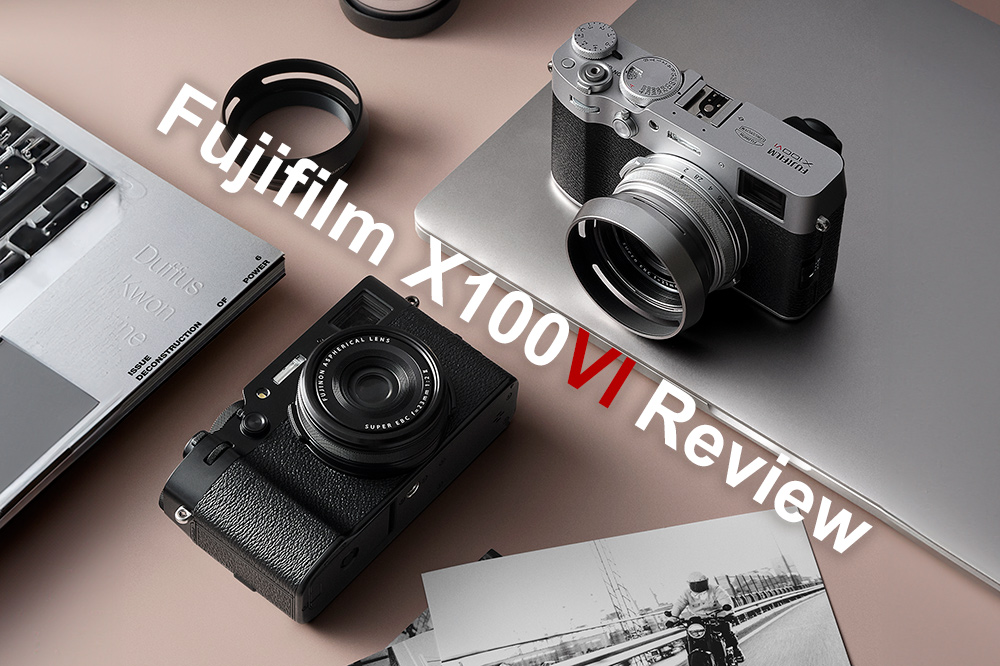
Fujifilm X100VI release date and price
The next-generation X100VI was launched on February 20th, 2024, and is available in black and silver finishes. The Fujifilm X100VI price is £1599.00 for either model, which is extremely competitive, especially considering its large APS-C format sensor and cutting-edge technology, which positions it as a highly desirable premium compact camera.
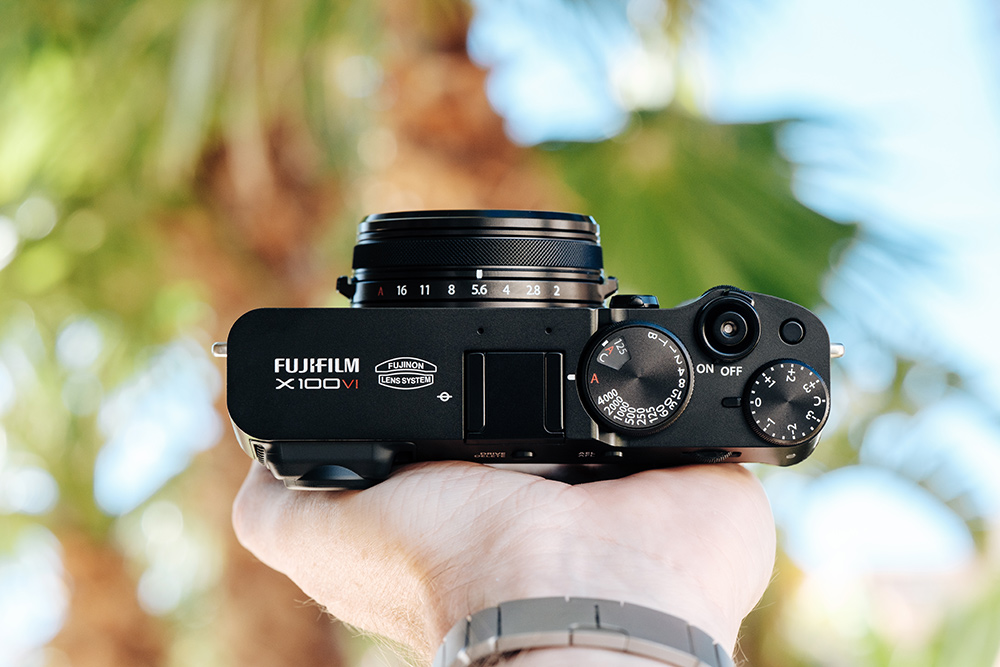
Key specifications
This generation X100VI camera combines the very best features from the X100V, together with numerous upgrades, plus a number of firsts for the X100V series. Key features include:
- New APS-C format 40.2 megapixel X-Trans HR Sensor
- New X-Processor 5
- New 5-axis in-body image stabilisation with up to 6.0 stops compensation
- New AF system with deep-learning AI subject detection and tracking for stills and video
- Updated AF tracking of animals, birds, cars, motorcycles, bicycles, airplanes, trains, insects, and drones
- Upgraded 6.2K/30p 4:2:2 10-bit internal video recording
- Upgraded base ISO 125
- Enhanced ergonomics with updated grip and improved button layout
- Updated Film Simulation now with 20 modes, including REALA ACE
- Improved image buffer with lossless RAW compression mode
- Improved battery performance
- Same 23mm f/2 pancake lens, compatible with previous lens converters
- Same Advanced Hybrid Viewfinder combining an OVF, ERF and EVF with 3.69 million dots
- Same lay-flat 2-way tilt LCD monitor with improved 45º tilt angle
- Same high-quality body design with aluminium surfaces, which is just 43g heavier and 2mm thicker
The X100 series has captivated photographers and hybrid creators since its debut in 2011, thanks to a stunning design, easy portability, and outstanding features. With the X100VI, Fujifilm continues this legacy by integrating cutting-edge features ported over from the X-T5 and X-H2, which are somehow contained in a body, which is barely heavier or larger than the previous one.
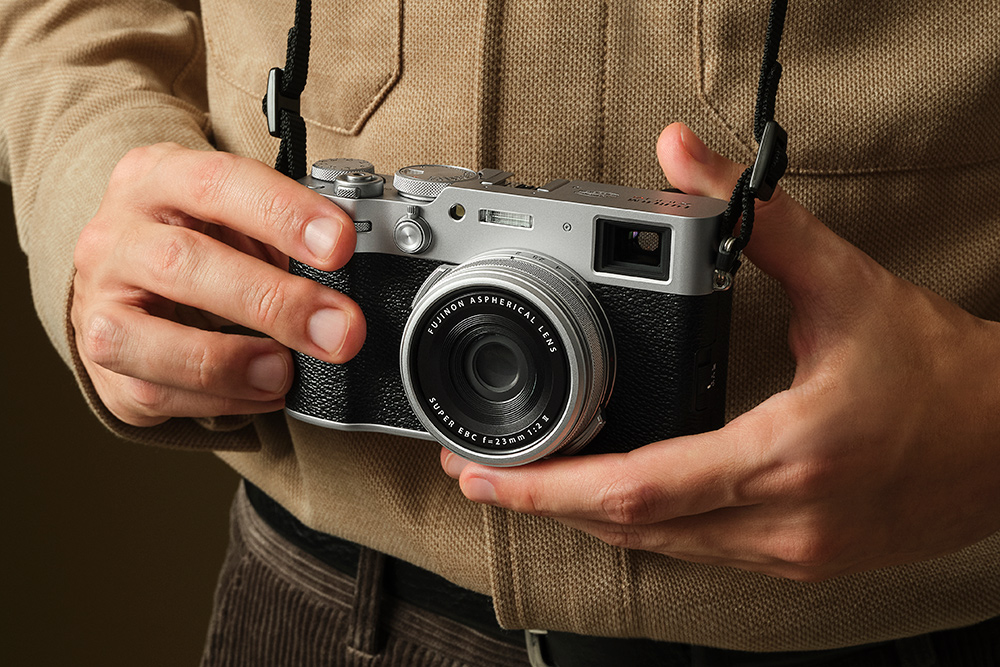
Ergonomics and usability
For the X100VI, Fujifilm decided to make a number of minor adjustments to enhance the camera’s usability. The grip and button layout have been slightly tweaked, offering better hold on the camera, while providing easier operation with the right hand when using the viewfinder.
Perhaps the primary appeal of the Fujifilm X100VI lies in its beautifully styled dial-based design, along with its unique Hybrid Viewfinder functionality inherited from earlier models. This functionality remains the same for this generation, displaying the image in an optical eyepiece viewfinder, or digitally on an LCD screen, while the Electronic Range Finder (ERF) displays a small EVF within the OVF.
Controlling the camera via the LCD is also a delightful experience, thanks to a range of familiar touch functions akin to using a smartphone. These include Swipe, Pinch-in / Pinch-out, Double-tap and Drag, making for a versatile and intuitive interface.
This versatility affords the photographer a variety of ways to compose various subjects, as well as pursuing a pure rangefinder-style of photography if they choose, for an immersive and truly enjoyable shooting experience.
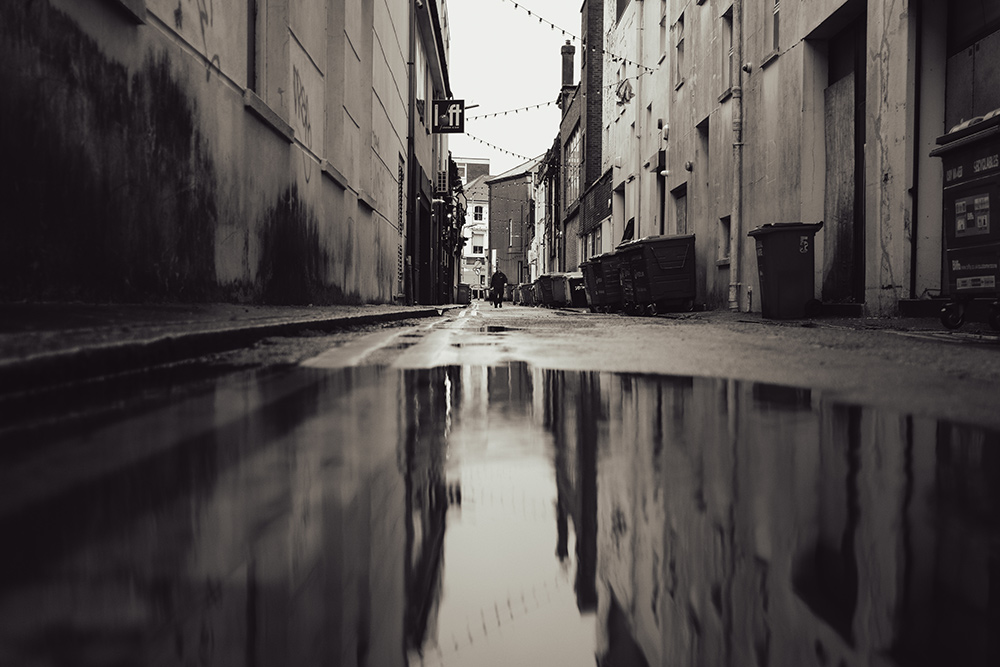
Sample 01. Camera settings: Exposure 1/640 sec. f/2. ISO 500
Is Fujifilm X100VI good for beginners?
The Fujifilm X100 series stands out for its user-friendly design, and the X100VI stays true to this tradition with intuitive settings that cater to beginners, enthusiasts and professionals. Whether opting for simplicity through Auto settings, or delving into advanced manual modes, the X100VI offers ease-of-use for all levels of creator.
The Fujifilm X100VI isn’t just a great compact for honing your skills, it's also a fantastic alternative for working professionals and enthusiasts seeking a second option. Its attraction lies in its ability to compel you to pick it up and shoot, whether on holiday or simply for a fresh burst of inspiration.

Sample 02. Camera settings: Exposure 1/500 sec. f/4. ISO 250
New Image stabilisation
The X100VI introduces in-body stabilisation for the first time in an X100 series camera. The ultra compact 5-axis IBIS mechanism provides up to 6.0 stops of compensation, which offers a significant advantage when shooting both stills and video content, especially when working in low light situations.
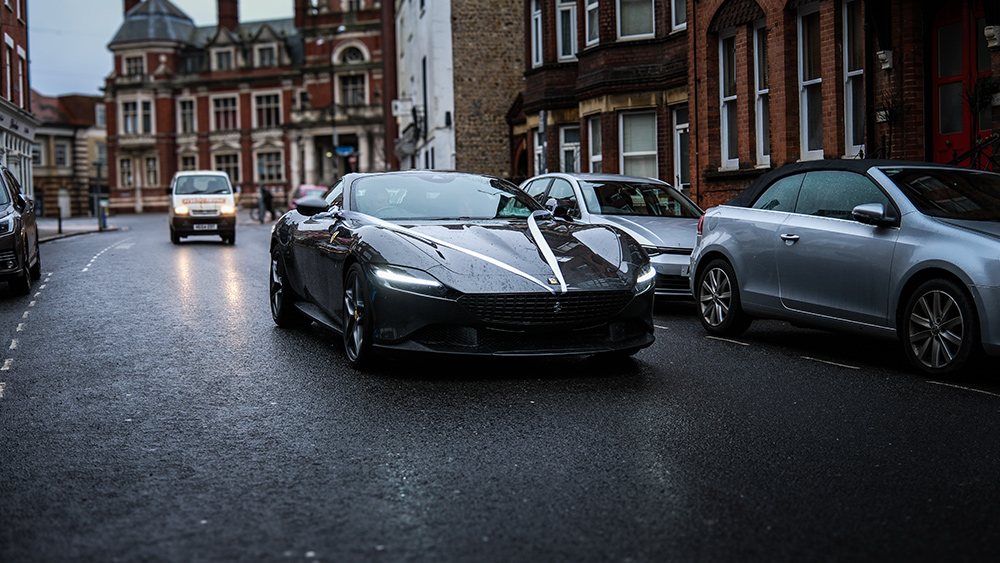
Sample 03. Camera settings: Exposure 1/500 sec. f/2. ISO 400
Improved Autofocus with AI technology
Thanks to the combination of the X-Trans 5 HR Sensor and X-Processor 5, the X100VI introduces enhanced deep learning subject recognition and focus tracking. This applies to continuously moving subjects, and works in both stills and movie modes.
The new camera is now able to detect animals, birds, cars, motorcycles, bicycles, airplanes, trains, insects and drones, although it should be noted that insects and drones are grouped together with birds and aircraft modes.
Whichever subjects you capture, the Fujifilm X100VI is better equipped to precisely focus, track and achieve sharp results for a greater variety of subjects than any preceding model.

Fujifilm X100VI lens
Fujifilm chose to maintain the X100VI's popularity by retaining the same acclaimed Fujifilm X100V lens. This is known for its extremely popular slightly wide 35mm equivalent full-frame focal width, bright maximum f/2.0 aperture, and exceptional resolution, which delivers well-controlled results thanks to two aspherical elements.
You can adapt the lens with optional conversion lenses without impacting image quality. Simply choose between the Fuji Wide Conversion Lens WCL-X100 II Black or Fuji Wide Conversion Lens WCL-X100 II Silver, which converts the lens to a 28mm prime (equivalent full-frame).
The Fujifilm Fuji Tele Conversion Lens TCL X100 II extends the lens to a 50mm focal width (35mm format equivalent), giving three prime focal lengths from a single high-quality lens.
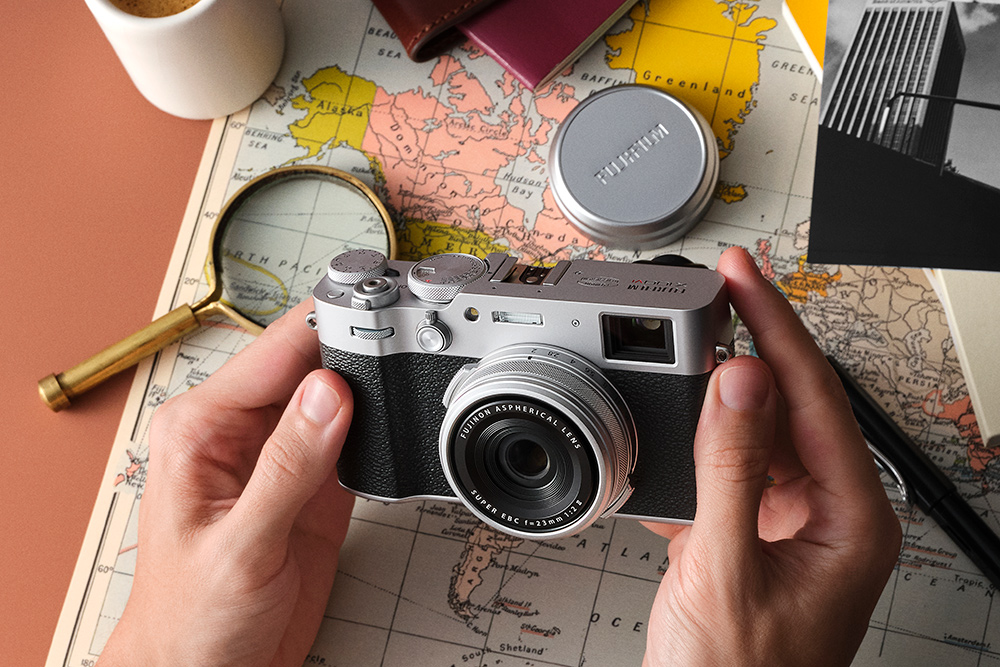
What subjects is the X100VI good for?
With its combination of high-speed continuous burst shooting, 40 megapixel sensor and 35mm equivalent lens, the X100VI can be used for a variety of genres. A 35mm lens is ideal for all sorts of subjects, which include;
- Street photography
- Portraits
- Travel
- Architecture
- Landscapes
- General day to day shooting
- Night photography
- Video
Adding either one of the conversions lenses further enhances these capabilities, enabling slightly wider or tighter compositions, while exploring similar subjects.
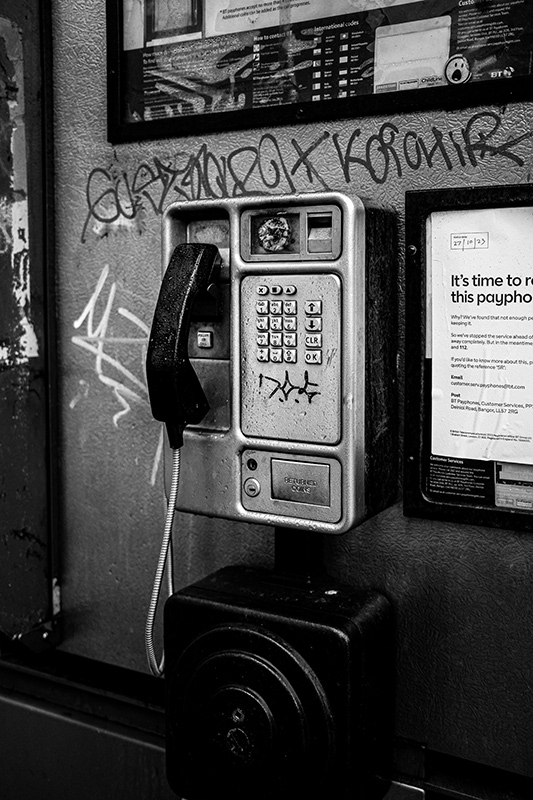
Sample 04. Camera settings: Exposure 1/640 sec. f/2. ISO 1600
Battery and buffer performance
Despite adding a number of powerful new features including in-body stabilisation, the X100VI offers slightly improved battery life over the X100V. It also provides deeper image buffering when shooting at high frame rates, allowing you to capture more shots in a sequence, in order to select the decisive moment.
The table below highlights X100VI battery life with the number of frames, which can be achieved on a single NP-W126S rechargeable battery in three available shooting modes using three image previews.
|
|
OVF |
EVF |
LCD |
|
Economy |
450 |
360 |
380 |
|
Normal |
450 |
310 |
320 |
|
Boost |
400 |
270 |
310 |
The X100V is able to continuous burst in both electronic and mechanical shutter modes. When shooting in electronic mode at the fastest 20fps frame rate, the buffer will store the following number of images in a sequence shown in the table below, compared to the previous model.
|
|
X100VI |
X100V |
|
Electronic shutter |
Approx. 20fps (1.29x Crop) |
Approx. 30fps (1.25x Crop) |
|
JPEG |
117 frames |
29 frames |
|
Compressed RAW |
52 frames |
17 frames |
|
Lossless compressed RAW |
35 frames |
N/A |
|
Uncompressed RAW |
17 frames |
17 frames |
|
Compressed RAW + JPEG |
25 frames |
N/A |
|
Lossless compressed RAW + JPEG |
22 frames |
N/A |
|
Uncompressed RAW + JPEG |
17 frames |
N/A |
It will reach a maximum of 163 frames in electronic shutter, when shooting at a very healthy 10fps.
For mechanical shutter mode we also see improvements to the buffer, with up to 11fps yielding a maximum of 38 frames, whereas shooting at 3.0fps will give you 504 frames before becoming full. Whichever way you slice it the latest generation is quick, accurate, and gives longer shooting times with an improved buffer and better battery life.
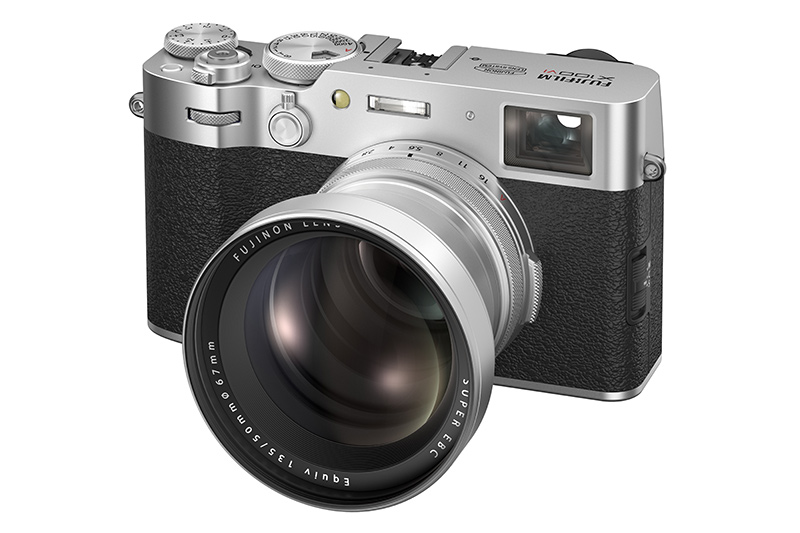
Silver model with optional tele conversion lens TCL X100 II silver
Is the Fujifilm X100VI good for video?
The X100VI offers the most advanced video in any X100 series camera, with up to 6.2K/30p resolution in 4:2:2 10-bit internal recording. Additional formats include DCI4K HQ (17:9) and 4K HQ (16:9) at 30p, or DCI4K (17:9) and 4K (16:9) at 60p.
Slow motion playback in Full HD at 240p is also provided, with HEVC/H.265, Linear PCM (Stereo sound 24bit / 48KHz sampling) file formats now available. The X100VI excels for video whether you’re a hybrid shooter or simply interested in learning how to capture everyday movies.
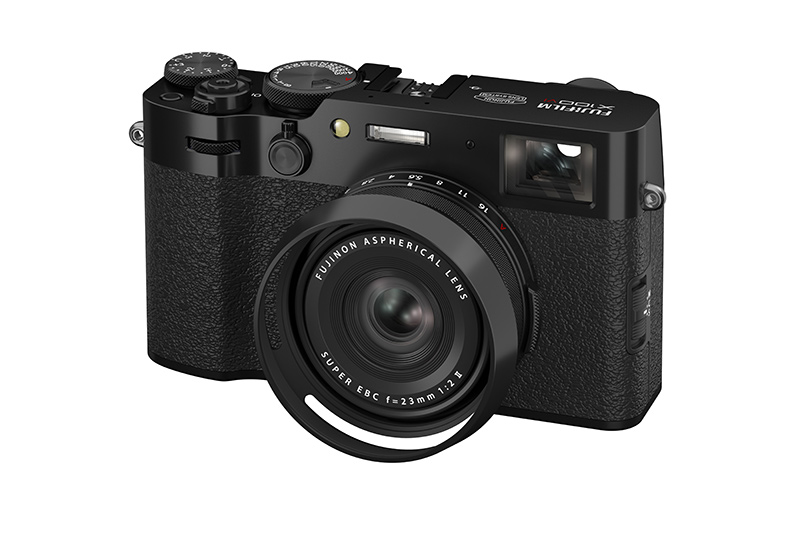
Black camera with optional LH-X100 Lens Hood (Black)
Build quality
The X100VI is very much beauty and the beast in one. Both black and silver models provide beautiful exterior design language, with thoughtfully placed controls, dials and machined aluminium panels for the top and bottom surfaces. Additionally, the main surface of the body is finely blasted for a smooth texture.
The result is a robust body, which handles extremely well, right down to the 2-way articulating LCD screen, which sits completely flush against the back panel. Even the LCD has been tweaked, with 45º tilt, up from 30º in the previous version.

Camera shown with optional silver WCL-X100 II wide conversion lens
Film simulation modes
Fuji cameras are revered for their stunning colour rendition, which is readily accessible through Film Simulation modes. The X100VI expands the palette with new additions like ETERNA BLEACH BYPASS, REALA ACE and Nostalgic Neg., bringing the total to 20, up from 17 in the previous model.
If you’re new to shooting straight out of camera film modes, explore How To Get Started With Fujifilm Film Simulation, which covers everything you need to know.
Fujifilm X100VI accessories
Aside from conversion lenses, there are a number of accessories available to extend the functionality of the X100VI. These include the LC-X100V genuine leather case, which offers luxurious protection with free access to the battery and SD memory card compartment.
You can also upgrade the camera’s weather resistance by adding the AR-X100 adapter ring and Fujifilm Protector Filter PRF-49S Silver or Protector Filter PRF-49 Black, which enable you to continue shooting in wet and rainy conditions. The adapter ring also allows you to mount a lens hood, and attach 49mm lens filters.
The X100VI supports UHS-I compliant SD cards, and there are many to choose from, although when recording video opt for a card with UHS Speed Class 3 or higher. The SanDisk 64GB Extreme PRO 200MB/S UHS-I SDXC Memory Card is a good middle capacity solution, while the SanDisk 256GB Extreme PRO 200MB/S UHS-I SDXC Card offers considerably higher capacity, with similar read/write speeds.
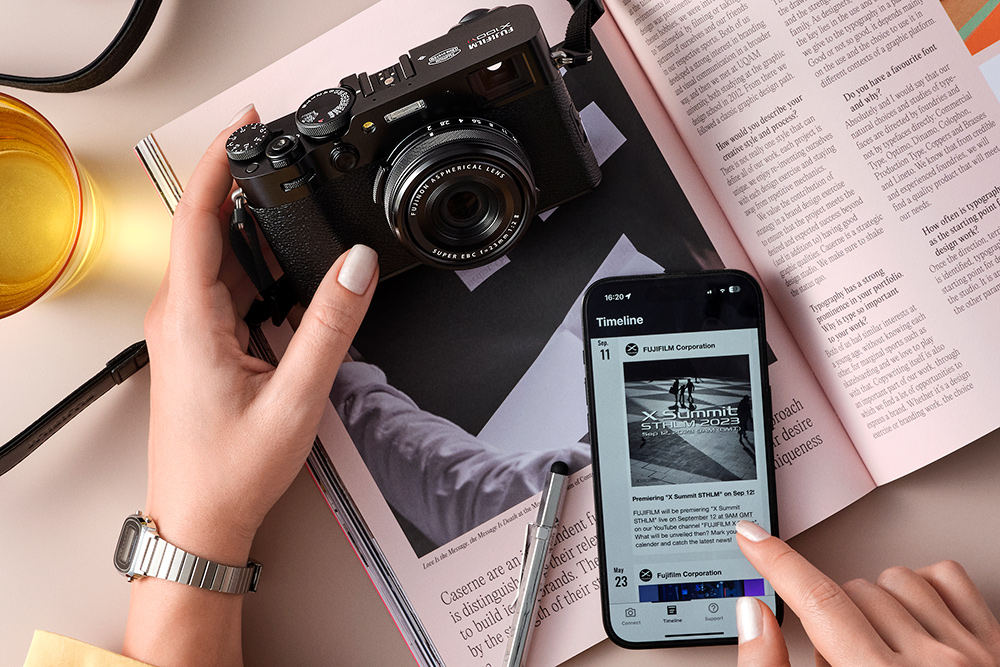
Fujifilm X100VI vs Fujifilm X100V specs comparison
The table below compares the most important specs between these two generations of compact digital cameras. Having already discussed improved buffering this is omitted from the table, which shows numerous compelling reasons to upgrade to the latest model, despite being a hair heavier and 2mm thicker.
|
|
Fujifilm X100VI |
Fujifilm X100V |
|
Lens Mount |
Fixed lens |
Fixed lens |
|
Image sensor |
23.5mm x 15.7mm (APS-C) X-Trans CMOS 5 HR with primary color filter |
23.5mm x 15.6mm (APS-C) X-Trans CMOS 4 with primary colour filter |
|
Number of effective pixels |
40.2 millions pixels |
26.1 millions pixels |
|
Image Processing Engine |
X-Processor 5 |
X-Processor 4 |
|
Storage media |
SD Card (-2GB) SDHC Card (-32GB) SDXC Card (-2TB) UHS-I |
SD Card (-2GB) SDHC Card (-32GB) SDXC Card (-2TB) UHS-I |
|
Lens |
FUJINON single focal length lens f=23mm (35mm format equivalent : 35mm) F2.0 8 elements in 6 groups (includes 2 aspherical elements) 4 stops ND filter |
FUJINON single focal length lens f=23mm (35mm format equivalent : 35mm) F2.0 8 elements in 6 groups (includes 2 aspherical elements) 4 stops ND filter |
|
Native sensitivity |
ISO 125~12800 (1/3 step) |
ISO160~12800 (1/3 step) |
|
Image stabiliser |
Image sensor shift mechanism with 5-axis compensation with 6.0 stops |
N/A |
|
Shutter type |
Lens Shutter |
Lens Shutter |
|
Shutter speed mechanical |
P mode 30sec. to 1/4000sec. A mode 30sec. to 1/4000sec. S/M mode 15min. to 1/4000sec. Bulb up to 60min. |
P mode 30sec. to 1/4000sec. A mode 30sec. to 1/4000sec. S/M mode 15min. to 1/4000sec. Bulb up to 60min. |
|
Shutter speed electronic |
P mode 30sec. to 1/180000sec. A mode 30sec. to 1/180000sec. S/M mode 15min. to 1/180000sec. Bulb 1sec. Fixed |
P mode 30sec. to 1/180000sec. A mode 30sec. to 1/180000sec. S/M mode 15min. to 1/180000sec. Bulb 1sec. Fixed |
|
Continuous shooting |
Electronic shutter Approx. 20fps / 13fps / 10fps (1.29x Crop) |
Electronic shutter Approx. 30fps / 20fps / 10fps (1.25x Crop) |
|
|
Mechanical shutter Approx. 11fps / 8.0fps / 6.0fps |
Mechanical shutter Approx. 11fps / 8.0fps / 6.0fps |
|
Focus |
Single AF Continuous AF MF Intelligent Hybrid AF (TTL contrast AF / TTL phase detection AF) |
Single AF Continuous AF MF Intelligent Hybrid AF (TTL contrast AF / TTL phase detection AF) |
|
AI subject recognition |
Animal / Bird / Automobile / Motorcycle&Bike / Airplane / Train |
N/A |
|
Flash |
Built-in flash |
Built-in flash |
|
Hot shoe |
Yes (Dedicated TTL Flash compatible) |
Yes (Dedicated TTL Flash compatible) |
|
Viewfinder (Hybrid viewfinder) OVF |
Reverse Galilean viewfinder with electronic bright frame display approx. 95% approx x0.52 |
Reverse Galilean viewfinder with electronic bright frame display approx. 95% approx x0.52 |
|
Viewfinder EVF |
0.5 inch OLED Color Viewfinder Approx. 3.69 million dots Approx. 100% Approx. 16.8mm (from the Rear End of the Camera's Eyepiece) -4~+2m-1 0.66x with 50mm Lens (35mm Equivalent) at infinity and Diopter set to -1.0m-1 approx. 32° (Horizontal angle of view: approx. 27° ) Built-In Eye Sensor |
0.5 inch OLED Color Viewfinder Approx. 3.69 million dots Approx. 100% Approx. 16.8mm (from the Rear End of the Camera's Eyepiece) -4~+2m-1 0.66x with 50mm Lens (35mm Equivalent) at infinity and Diopter set to -1.0m-1 approx. 32° (Horizontal angle of view: approx. 27° ) Built-In Eye Sensor |
|
LCD monitor |
3.0 inch tilting touch screen colour LCD monitor 3:2 Approx. 1.62 million dots |
3.0 inch tilting touch screen colour LCD monitor 3:2 Approx. 1.62 million dots |
|
Movie recording |
HEVC/H.265, Linear PCM (Stereo sound 24bit / 48KHz sampling) MPEG-4 AVC/H.264, Linear PCM (Stereo sound 24bit / 48KHz sampling) |
MPEG-4 AVC/H.264, Linear PCM (Stereo sound 24bit / 48KHz sampling) |
|
6.2K (16:9) |
6240 x 3150 29.97p 200Mbps |
N/A |
|
DCI4K HQ (17:9) |
4096 x 2160 29.97p 200Mbps |
N/A |
|
4K HQ (16:9) |
3840 x 2160 29.97p 200Mbps |
N/A |
|
DCI4K (17:9) |
4096 x 2160 59.94p 200Mbps |
4096 x 2160 29.97p 200Mbps |
|
4K (16:9) |
3840 x 2160 59.94p 200Mbps |
3840 x 2160 29.97p 200Mbps |
|
Full HD (17:9) |
2048 x 1080 59.94p 200Mbps |
2048 x 1080 59.94p 200Mbps |
|
Full HD (17:9) High speed rec. |
2048 x 1080 240p 200Mbps |
NA |
|
Film simulation mode |
20 modes |
17 modes |
|
Wireless transmitter |
IEEE802.11a/b/g/n/ac (standard wireless protocol) |
IEEE802.11a/b/g/n/ac (standard wireless protocol) |
|
Terminal |
USB Type-C USB 10Gbps HDMI Micro connector (Type D) Microphone / shutter release input: ø2.5mm Hot shoe |
USB Type-C USB 10Gbps HDMI Micro connector (Type D) Microphone / shutter release input: ø2.5mm Hot shoe |
|
Power supply |
NP-W126S Li-ion battery (included) Approx. 360 / 450 frames (EVF / OVF) Normal mode |
NP-W126S Li-ion battery (included) Approx. 350 / 420 frames (EVF / OVF) Normal mode |
|
Dimensions |
128.0mm x 74.8mm x 55.3mm |
128.0mm x 74.8mm x 53.3mm |
|
Weight |
Approx. 521g including battery and memory card |
Approx. 478g including battery and memory card |
The Fujifilm X100VI is poised to become equally desirable as its predecessor, which remains extremely rare in the second-hand market due to its widespread popularity. The sixth generation camera introduces several firsts for the system including 6.0-stops of IBIS, as well as improving resolution, and both image and video quality.
Despite numerous upgrades it remains almost pocketable, absolutely beautifully designed, and accepts all of the same accessories as before. Considering the more advanced AF, improved battery life and all of the other improvements, it becomes an even more compelling upgrade if you’re lucky enough to own the X100V or a previous model.
It's all about personal preference when it comes to choosing between the Fujifilm X100VI Digital Camera Black or Fujifilm X100VI Digital Camera Silver. I already have my eye on one, how about you?
If you are selling camera gear which you no longer want in order to upgrade to the X100VI, why not take advantage of our free quotation, which is fast, easy and takes all of the stress out of selling on the open market.
Share this post:
By Nick Dautlich on 22/02/2024
Nick Dautlich
Senior Content Writer and Product Reviewer
Nick Dautlich is the Senior Content Writer and Product Reviewer at Park Cameras, with over 15 years of photography experience. A Sony Imaging Professional and expert reviewer, Nick has worked with major brands such as Canon, Sony and Nikon. His work is also featured on Vanguard World UK’s website, Capture Landscapes, and Shutter Evolve. Nick’s photography includes National Trust projects and magazine covers and he is passionate about landscapes and storytelling. Nick also enjoys hiking and teaching his children about nature. Learn more on his profile page.

Trade in your old equipment
Fast and easy trade in service ensures your old gear is collected efficiently and you are paid quickly! It's very simple to trade in your unwanted photography gear. Just head over to our dedicated Sell or Part Exchange page, fill out the details, and we'll get back to you with an offer for your old gear. Take the cash, or put it towards the cost of your new gear. It's up to you! Find out more
sign up to the newsletter
Keep up to date on the latest photography news, events and offers. Sign up now
